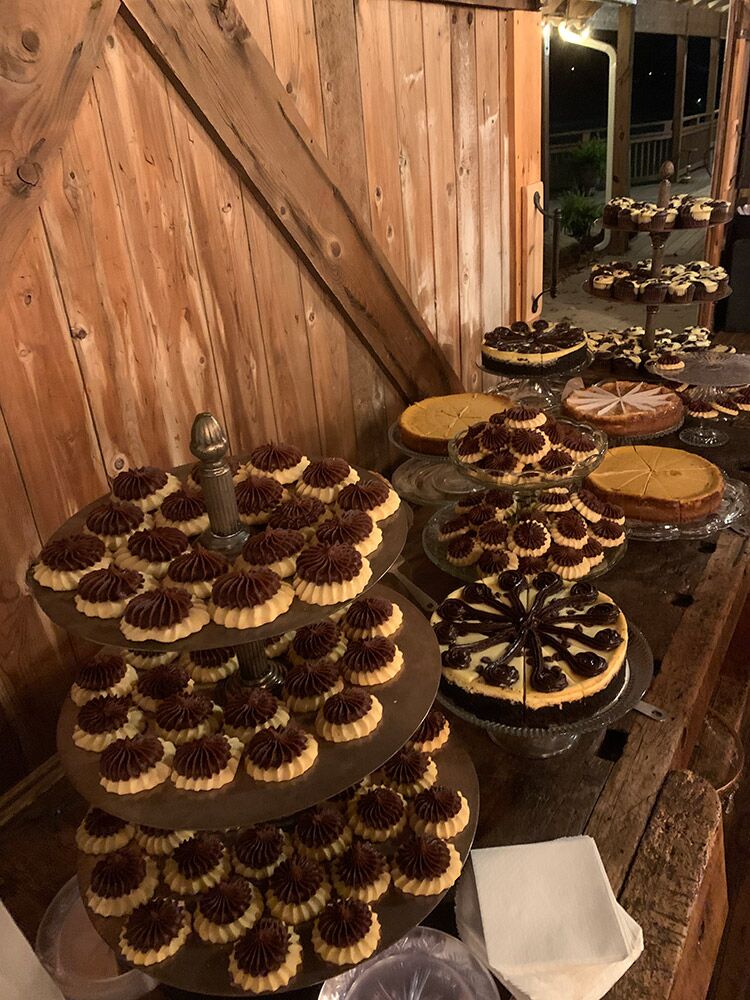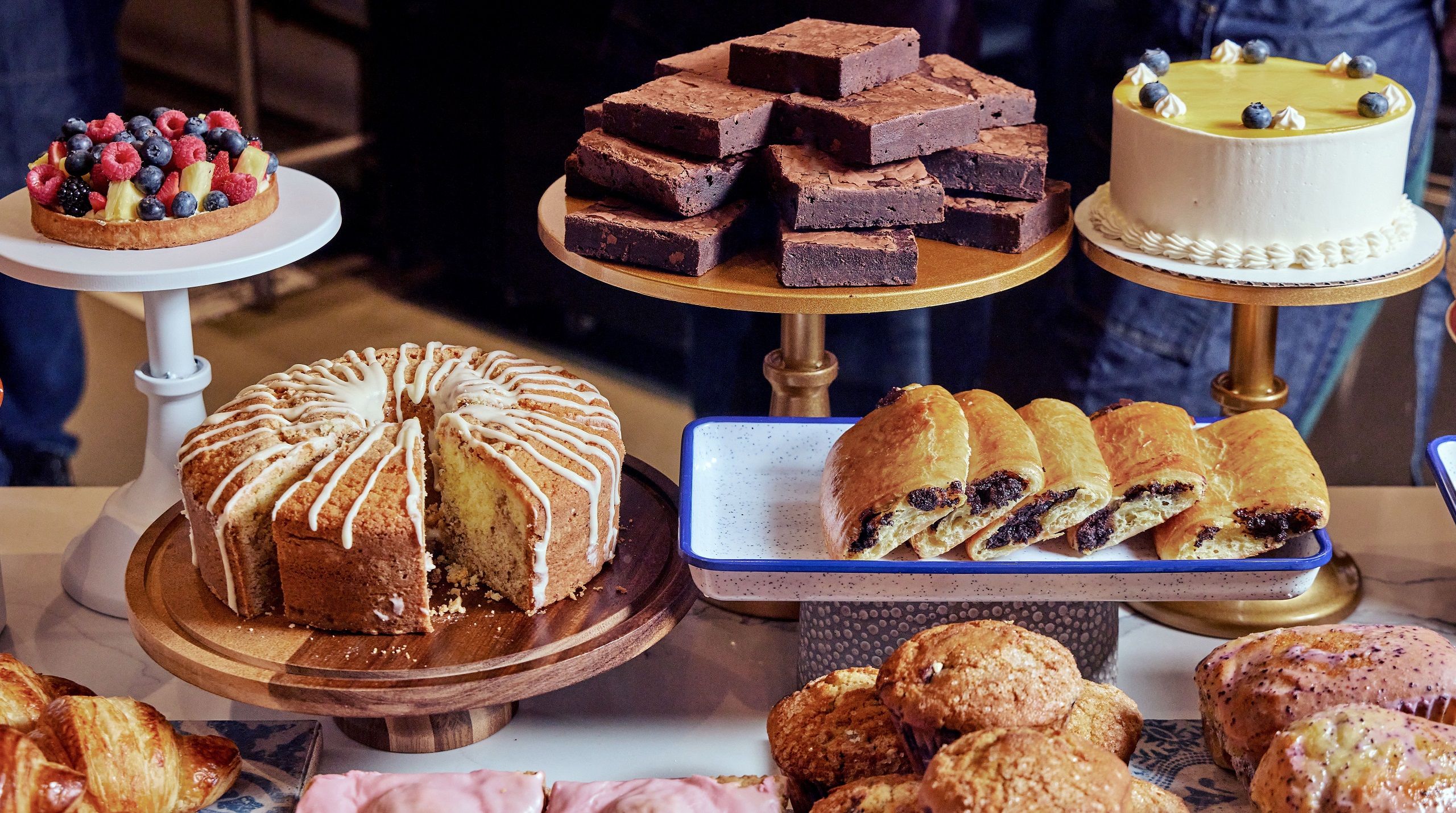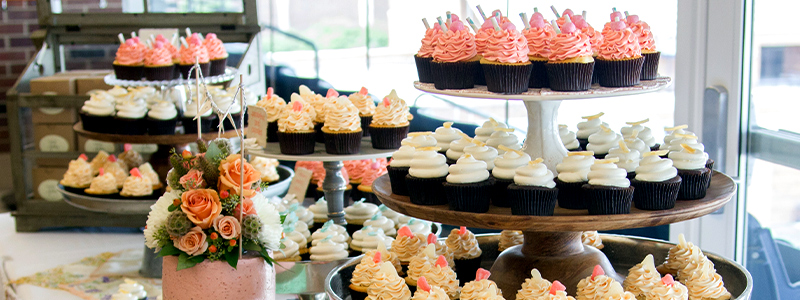Remarkable Catering Maddington Solutions for Your Next Event
Wiki Article
Comprehending the Art of Bakery Products: From Freshly Baked Breads to Tempting Pastries and Finger Foods
From the scientific research behind the ideal loaf of bread, where fermentation and gluten growth play pivotal duties, to the skill needed for producing layered breads, each element exposes a compelling story of craftsmanship. The flexibility of finger foods illustrates just how taste and appearance can be artfully incorporated to engage varied preference choices.The Science of Bread Making
At the heart of every loaf of bread exists a fascinating interplay of chemistry and biology. The process of bread making starts with the mix of flour, salt, water, and yeast-- each component playing a critical duty in the final item.
Yeast, a living organism, ferments the sugars present in the flour, producing carbon dioxide and alcohol in the procedure. The carbon dioxide gas produces bubbles in the dough, creating it to rise and create a light texture. The temperature level and humidity throughout fermentation significantly influence yeast activity and, as a result, the bread's flavor and appearance.

Learning Bread Strategies
How can one accomplish the delicate balance of texture and taste that specifies phenomenal bread? Mastering bread methods calls for a deep understanding of ingredients, approaches, and the science behind them. Fundamental to this craft is the choice of top notch components-- flour, butter, sugar, and eggs-- each playing an important role in the end product's taste and structure.The strategy of lamination, which includes folding layers of dough and butter, creates the preferred flakiness in breads like croissants and smoke pastry. Precision in temperature is crucial, as butter must stay cool to guarantee optimal layers. Correct mixing techniques, such as the creaming technique for cakes, guarantee even consolidation of air and fat, resulting in a light and ventilated crumb.
Additionally, preserving the right humidity degrees during cooking can significantly affect the end result, ensuring that pastries rise properly and attain that golden-brown coating. Finally, the art of bread also requires perseverance and method; each effort enhances one's ability and understanding of the intricate balance needed to produce irresistible breads that delight the detects. Proficiency in these methods eventually distinguishes a proficient bread cook from an amateur.
Kinds Of Finger Foods
The globe of cooking delights extends beyond pastries to incorporate a vast variety of finger foods, which are celebrated for their convenience and versatility. These bite-sized deals with are excellent for social events, offering a selection of flavors and structures that accommodate diverse tastes.
On the sweeter side, bite-sized cupcakes and miniature tarts offer a wonderful coating to any kind of meal, attracting those with a pleasant tooth. Furthermore, cheese and charcuterie boards function as an innovative option, allowing guests to tailor their bites with a variety of meats, cheeses, fruits, and nuts.
Taste Profiles in Cooking
Baking is an intricate dance of taste profiles that find more information combines pleasant, savory, and umami notes to produce a harmonious experience for the palate. Comprehending these profiles is necessary for bakers seeking to boost their developments.Sweetness often offers as the structure in baked goods, with sugars, fruits, and all-natural sugar enhancing taste depth. Components such as delicious chocolate and sugar present complex sweet notes that can either dominate or enhance other flavors. On the other hand, tasty aspects, often discovered in breads and breads, offer equilibrium and contrast. Components like spices, herbs, and cheeses can change a straightforward dough right into a complex flavor experience.
Umami, frequently ignored in baking, plays a substantial function in enriching tastes. Active ingredients such as aged cheeses, fermented items, and even particular nuts add to a savory deepness that improves general taste.
In addition, the interplay of acidity from active ingredients like buttermilk or citrus enthusiasm can lighten up flavors, using a refreshing counterpoint to sweet taste. By thoughtfully integrating these taste profiles, bakers can craft items that reverberate with diverse palates, developing a remarkable culinary experience. Eventually, understanding taste profiles is crucial to advancement on the planet of baking.
Essential Baking Tools and Components
Comprehending flavor profiles in baking collections the stage for choosing the right devices and active ingredients that help with the development of phenomenal baked goods. A dependable set of great post to read baking pans-- such as sheet frying pans, loaf frying pans, and cake frying pans-- is crucial for accomplishing desired forms and textures.In terms of active ingredients, top quality issues considerably. Flour functions as the backbone of most recipes; picking the best type-- be it bread, all-purpose, or bread flour-- can significantly affect the outcome. Sugar not only sweetens however also adds to structure, while eggs act as binders and raising agents. Baking powder and baking soda are necessary for developing lift in cakes and pastries.
Furthermore, including flavor enhancers like vanilla essence, flavors, and citrus zest can raise your productions. By making certain access to these fundamental devices and active ingredients, bakers can confidently get started on their culinary trip, crafting a diverse range of fascinating baked goods.
Conclusion
To conclude, the art of bakeshop items encompasses a profound understanding of both clinical go principles and innovative methods. Mastery in bread making, bread preparation, and finger food discussion discloses the detailed relationships between components and processes. Checking out diverse taste profiles enhances the baking experience, while essential tools and active ingredients provide the foundation for success. Ultimately, the enchanting world of baking prospers on the harmonious interplay of scientific research and creative thinking, causing a myriad of wonderful cooking developments.How can one accomplish the fragile balance of structure and flavor that defines phenomenal pastry? Fundamental to this craft is the option of premium components-- flour, butter, sugar, and eggs-- each playing a crucial duty in the last item's taste and appearance.

Recognizing flavor accounts in baking collections the stage for picking the right tools and ingredients that promote the development of phenomenal baked products. Exploring diverse taste accounts improves the baking experience, while crucial tools and components supply the structure for success.
Report this wiki page